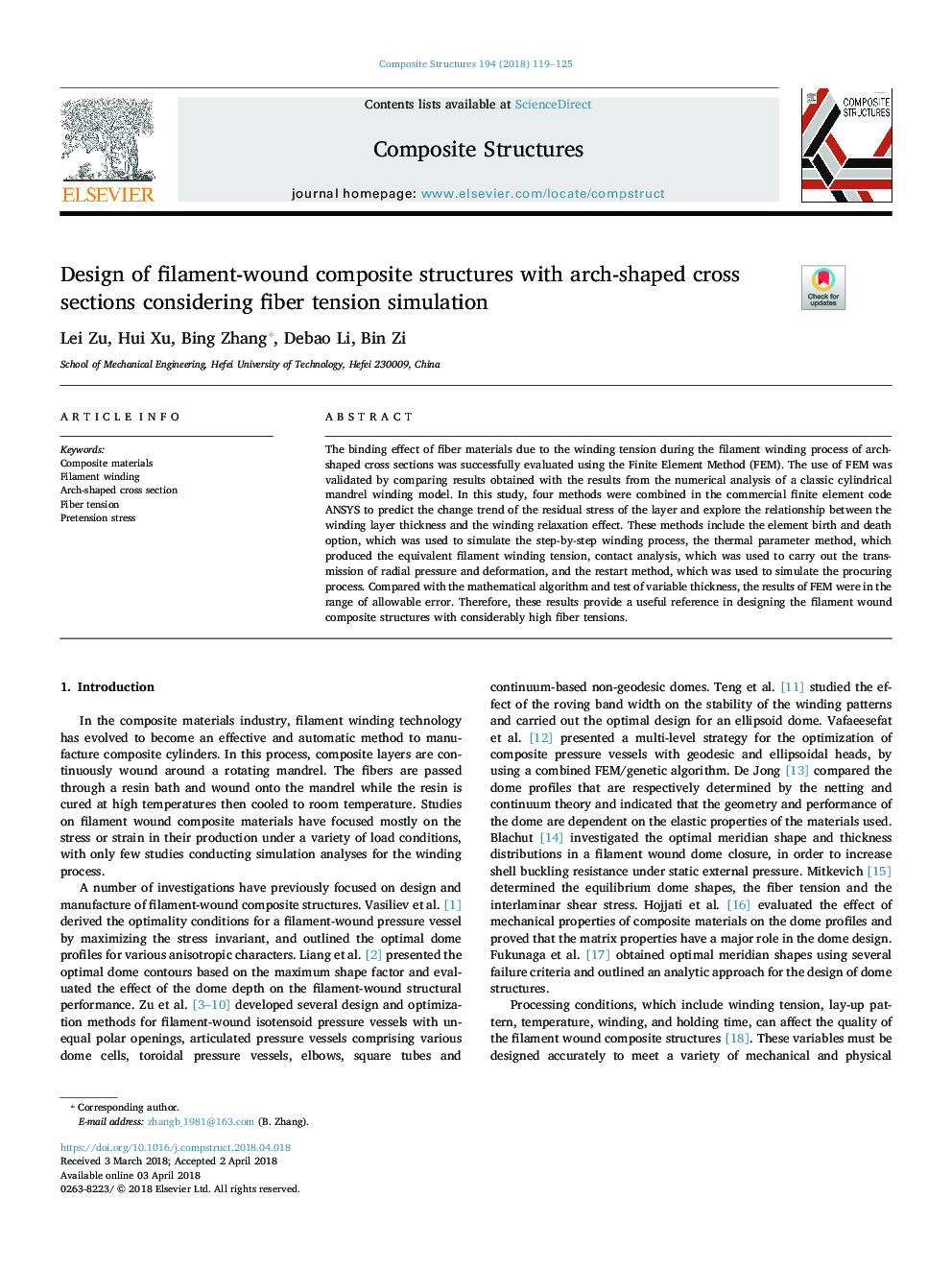| Article ID | Journal | Published Year | Pages | File Type |
|---|---|---|---|---|
| 6703465 | Composite Structures | 2018 | 7 Pages |
Abstract
The binding effect of fiber materials due to the winding tension during the filament winding process of arch-shaped cross sections was successfully evaluated using the Finite Element Method (FEM). The use of FEM was validated by comparing results obtained with the results from the numerical analysis of a classic cylindrical mandrel winding model. In this study, four methods were combined in the commercial finite element code ANSYS to predict the change trend of the residual stress of the layer and explore the relationship between the winding layer thickness and the winding relaxation effect. These methods include the element birth and death option, which was used to simulate the step-by-step winding process, the thermal parameter method, which produced the equivalent filament winding tension, contact analysis, which was used to carry out the transmission of radial pressure and deformation, and the restart method, which was used to simulate the procuring process. Compared with the mathematical algorithm and test of variable thickness, the results of FEM were in the range of allowable error. Therefore, these results provide a useful reference in designing the filament wound composite structures with considerably high fiber tensions.
Keywords
Related Topics
Physical Sciences and Engineering
Engineering
Civil and Structural Engineering
Authors
Lei Zu, Hui Xu, Bing Zhang, Debao Li, Bin Zi,
